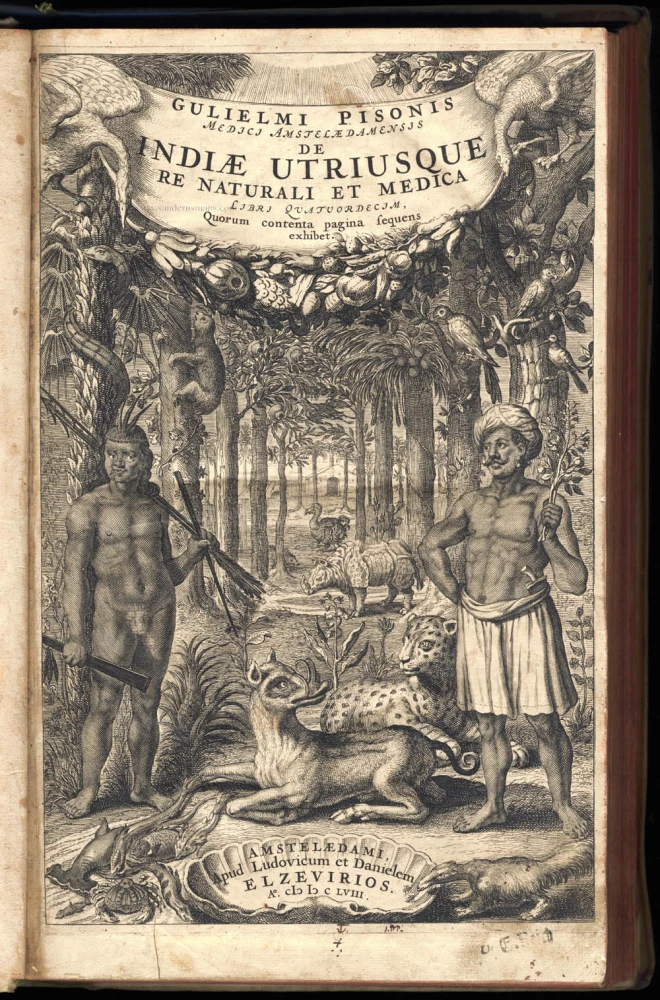Piso G. De Indiae utriusque re naturali et medica, ... 1658. 1661
back
Second edition, revised and enlarged, folio (346 x 214mm.), engraved title, approx. 650 woodcuts in the text, contemporary vellum.
Borba de Moraes 676; Garrison-Morton 1825, Nissen (BBI) 1533; Sabin (America), 63029
"A pioneer work on tropical medicine and the largest work from the standpoint of format published by the Elzevirs" (Garrison-Morton). This work includes De medicina brasiliensi by Piso and Historia rerum naturalium brasiliae (including chapters on the natural history of Chile) by Georg Marcgraf (1610-1644). The work details the native uses of plants and animals for illnesses and provides the most extensive documentation of Brazilian flora and fauna in the seventeenth century. This is an extensively revised and enlarged second edition of Piso's Historia naturalis brasiliae (1648) with a new chapter by Piso on aromatic plants, and further chapters by Jacob Bontius, and approximately 150 additional woodcuts. The woodcuts include depictions of birds, animals, fish, plants, trees and reptiles. Piso was the first person to separate yaws (a contagious tropical skin disease) from syphilis and introduced the shrub ipecacuanha into Europe which was used as an emetic, diaphoretic and purgative.
De Indiae utriusque re naturali et medica, libri quatuordecim.
€8000
($9280 / £6960)
add to cart
Buy now
questions?
PRINT
Item Number: 21499 Authenticity Guarantee
Category: Books > Scientific Books
A pinoneer work on tropical medecine.
Piso G. De Indiae utriusque re naturali et medica, libri quatuordecim. Amsterdam, Elzevir, 1658. 11p, 329pp, 2p, 39pp, 226pp, 1p.Second edition, revised and enlarged, folio (346 x 214mm.), engraved title, approx. 650 woodcuts in the text, contemporary vellum.
Borba de Moraes 676; Garrison-Morton 1825, Nissen (BBI) 1533; Sabin (America), 63029
"A pioneer work on tropical medicine and the largest work from the standpoint of format published by the Elzevirs" (Garrison-Morton). This work includes De medicina brasiliensi by Piso and Historia rerum naturalium brasiliae (including chapters on the natural history of Chile) by Georg Marcgraf (1610-1644). The work details the native uses of plants and animals for illnesses and provides the most extensive documentation of Brazilian flora and fauna in the seventeenth century. This is an extensively revised and enlarged second edition of Piso's Historia naturalis brasiliae (1648) with a new chapter by Piso on aromatic plants, and further chapters by Jacob Bontius, and approximately 150 additional woodcuts. The woodcuts include depictions of birds, animals, fish, plants, trees and reptiles. Piso was the first person to separate yaws (a contagious tropical skin disease) from syphilis and introduced the shrub ipecacuanha into Europe which was used as an emetic, diaphoretic and purgative.

